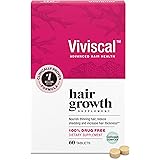Introduction to the Supreme Zone Diet
The Supreme Zone Diet is a meticulously crafted nutritional plan aimed at promoting optimal health by balancing macronutrients. This dietary approach is rooted in the principles of the original Zone Diet developed by Dr. Barry Sears in the 1990s, which emphasizes maintaining a specific ratio of carbohydrates, proteins, and fats to enhance overall well-being. The Supreme Zone Diet expands on these foundational elements, encouraging an even greater focus on meal quality and timing, making it popular among health enthusiasts seeking a structured yet flexible dietary regime.
At its core, the Supreme Zone Diet advocates for a significant balance of 40% carbohydrates, 30% proteins, and 30% fats in daily meals. This ratio is designed to stabilize blood sugar levels, reduce hunger, and maximize energy. One of the principal philosophies underpinning this diet is the belief that consuming the right proportions of macronutrients can positively influence metabolic processes, leading to improved health outcomes and weight management. This balance helps in reducing the risks associated with chronic diseases and enhances mental clarity, an aspect that has attracted a diverse group of followers.
Since its inception, the Supreme Zone Diet has gained considerable traction among individuals looking to refine their eating habits without feeling deprived of their favorite foods. The diet promotes nutrient-dense, whole foods, emphasizing the importance of high-quality ingredients, which are key to achieving and maintaining health. This approach not only resonates with those looking to lose weight but also appeals to anyone interested in improving their overall lifestyle through balanced meals. As the Supreme Zone Diet continues to evolve, its influence in the realm of health and nutrition remains prominent, establishing it as a noteworthy dietary framework for those seeking to optimize their health.
Understanding Macronutrients: The Building Blocks of the Zone
The Supreme Zone Diet emphasizes the importance of macronutrients, which are essential components of our diet: carbohydrates, proteins, and fats. Each macronutrient plays a critical role in maintaining overall health and wellness, and understanding their functions can help individuals make informed dietary choices.
Carbohydrates serve as the body’s primary energy source. They are found in various food items such as fruits, vegetables, grains, and legumes. When consumed, carbohydrates are broken down into glucose, which is utilized by the body for immediate energy or stored for later use. In the context of the Supreme Zone Diet, carbohydrates should compose 40% of total daily caloric intake, focusing on high-quality sources that provide essential vitamins, minerals, and fiber.
Proteins, which comprise approximately 30% of the diet in the Supreme Zone Diet, are vital for tissue repair, muscle building, and maintaining a robust immune system. Proteins are made up of amino acids, some of which are essential and must be obtained through diet. High-quality protein sources include lean meats, fish, eggs, dairy, beans, and nuts. Adequate protein consumption not only supports muscle health but also aids in satiety, which may help reduce overall caloric intake.
Fats, constituting the remaining 30% of the Supreme Zone Diet, are often misunderstood due to their association with weight gain. However, healthy fats are crucial for numerous bodily functions, including hormone production, nutrient absorption, and maintaining cell integrity. The focus should be on unsaturated fats from sources like avocados, olive oil, and fatty fish, while limiting saturated and trans fats found in processed foods.
This careful balancing of macronutrients—40% carbohydrates, 30% proteins, and 30% fats—ensures that individuals on the Supreme Zone Diet receive a diverse range of nutrients. This structured approach not only fosters optimal health but also equips individuals with the necessary tools to maintain their energy levels and manage weight more effectively.
Constructing Balanced Meals: Practical Tips
Creating balanced meals that align with the Zone Diet principles requires thoughtful planning and a focus on portion control. To begin with, understanding the core tenet of the Zone Diet is essential: meals should consist of a one-to-one ratio of carbohydrates, proteins, and fats. This balance is closely linked to maintaining optimal health and supporting overall well-being. Therefore, meal planning is crucial and should be developed weekly to simplify grocery shopping and cooking.
When grocery shopping, prioritize whole foods over processed items. Look for fresh vegetables, lean proteins such as poultry, fish, and legumes, as well as healthy fats like avocados, nuts, and olive oil. A well-structured shopping list can help you avoid impulse buys that may dilute your commitment to balanced meals. Additionally, visit local farmers’ markets if possible to obtain seasonal produce, which can enhance the flavor and nutrition of your meals.
Portion control plays a critical role in adhering to the Zone Diet. Utilizing measuring cups and food scales can help in accurately assessing serving sizes. For example, aim for a maximum of 30-35% of your plate to consist of carbohydrates, while protein and fat remain at 30% and 25-30% respectively. Visual cues such as using smaller plates can also assist in controlling portions without the need for constant measuring.
Examples of balanced meals include a grilled chicken salad with mixed greens, cherry tomatoes, and a drizzle of olive oil, or a stir-fry consisting of tofu, colorful vegetables, and quinoa. Incorporating these practical tips into meal construction will guide individuals toward mastering the Zone Diet and achieving the health benefits that a balanced approach provides.
Benefits of the Supreme Zone Diet
The Supreme Zone Diet is designed to optimize health through balanced meal planning, emphasizing the right proportions of macronutrients—carbohydrates, proteins, and fats. One of the most significant benefits of this diet is the improvement in energy levels. By prioritizing low-glycemic carbohydrates and healthy fats, individuals often experience sustained energy throughout the day without the common spikes and crashes associated with refined carbohydrates. Studies have shown that a diet mindful of these factors can enhance overall vitality and endurance, making it particularly beneficial for those with active lifestyles.
Another notable advantage of the Supreme Zone Diet is its role in weight management. By focusing on portion control and balanced nutrient ratios, many followers find it easier to maintain a healthy weight. Unlike restrictive diets, this framework allows for a variety of foods, making it more sustainable in the long term. Research indicates that individuals who adopt balanced eating habits, like those promoted by the Supreme Zone Diet, are more likely to succeed in their weight loss goals compared to those on conventional crash diets.
Furthermore, reduced inflammation is a prominent benefit linked to this dietary approach. Chronic inflammation has been associated with various health issues, including cardiovascular diseases and metabolic disorders. The inclusion of omega-3 fatty acids from sources like fish and nuts, prevalent in the Supreme Zone Diet, has been shown to combat inflammation effectively. Numerous scientific studies support the claim that such dietary patterns can lead to long-term health improvements, reducing the risk of chronic illnesses.
Lastly, enhanced mental clarity is an often-overlooked benefit of following the Supreme Zone Diet. A well-balanced intake of nutrients can significantly affect cognitive function. Foods that stabilize blood sugar levels contribute to better focus and mental performance. Testimonials from those who have adopted this eating style frequently highlight improved mood and sharper thinking, which can be attributed to the nutritional value of the meals consumed.
Common Misconceptions and Challenges
The Supreme Zone Diet has garnered considerable attention, yet it is not without its share of misconceptions and challenges that can hinder individuals from effectively implementing it into their lifestyle. One prevalent myth revolves around the macronutrient ratios that the diet promotes. Often, individuals assume that strict adherence to these ratios is necessary for success, leading to the false belief that even slight deviations will negate any benefits. In reality, the diet encourages a balanced approach and allows for flexibility to meet personal dietary needs and preferences.
Another misconception is that the Supreme Zone Diet may inadvertently promote restrictive eating. This can deter potential followers who fear the limitations may lead to a nutritional imbalance or deficiency. However, the diet does not advocate deprivation; instead, it emphasizes the importance of consuming a variety of foods from all food groups. By understanding that the diet is about balance rather than restriction, individuals can better adopt this nutritional plan without feeling overwhelmed.
While following the Supreme Zone Diet can be beneficial, several challenges may arise. One common hurdle is the initial adjustment period, wherein individuals may experience feelings of hunger or cravings as they modify their eating habits. This can be particularly pronounced as the body adapts to new macronutrient ratios. To counter this, individuals are encouraged to experiment with meal planning and preparation techniques. Incorporating nutrient-dense snacks and gradually transitioning into the new dietary framework can alleviate some of these initial struggles.
Furthermore, social situations often present difficulties, as individuals might find it challenging to adhere to the dietary guidelines during gatherings or dining out. To navigate these challenges, it is crucial to remain prepared, seek out suitable meal options, and communicate dietary goals effectively to friends and family. By addressing these misconceptions and challenges, individuals can embark on their journey with the Supreme Zone Diet with confidence and resilience.
Sample Meal Plans: Achieving the Perfect Balance
The Supreme Zone Diet emphasizes the importance of balanced meals, focusing on the right combination of macronutrients: carbohydrates, protein, and fats. To assist readers in mastering this approach, here is a week-long meal plan complete with breakfast, lunch, dinner, and snack ideas that demonstrate how to effectively balance these nutrients.
Day 1
Breakfast: Greek yogurt topped with berries and a sprinkle of flaxseed.
Lunch: Quinoa salad with chickpeas, diced bell peppers, olive oil, and lemon dressing.
Dinner: Grilled salmon, steamed broccoli, and sweet potato wedges.
Snacks: A handful of almonds and an apple.
Day 2
Breakfast: Overnight oats made with rolled oats, almond milk, and banana slices.
Lunch: Turkey wrap with whole grain tortilla, spinach, and hummus.
Dinner: Stir-fried tofu with mixed vegetables served over brown rice.
Snacks: Baby carrots with guacamole.
Day 3
Breakfast: Smoothie with spinach, protein powder, and a small banana.
Lunch: Lentil soup accompanied by a side of whole grain bread.
Dinner: Baked chicken breast, asparagus, and quinoa.
Snacks: Cottage cheese with pineapple.
Day 4
Breakfast: Scrambled eggs with spinach and whole grain toast.
Lunch: Spinach salad with tuna, olive oil, and vinegar dressing.
Dinner: Zucchini noodles topped with marinara sauce and turkey meatballs.
Snacks: Celery sticks with peanut butter.
Day 5
Breakfast: Chia seed pudding with diced mango and coconut flakes.
Lunch: Brown rice bowl with black beans, corn, and avocado.
Dinner: Stuffed bell peppers with ground turkey and quinoa.
Snacks: Greek yogurt with honey and walnuts.
Day 6
Breakfast: Whole grain pancakes topped with fresh strawberries and a drizzle of maple syrup.
Lunch: Grilled vegetable sandwich on whole grain bread with a side salad.
Dinner: Baked cod with a side of roasted Brussels sprouts and sweet potato mash.
Snacks: Sliced bell peppers with a yogurt dip.
Day 7
Breakfast: Smoothie bowl topped with granola and sliced kiwi.
Lunch: Quinoa and black bean salad with cilantro lime dressing.
Dinner: Roast chicken with mixed greens and avocado dressing.
Snacks: Rice cakes with almond butter and banana slices.
This sample meal plan is not just a guide to eating well but also promotes the principles of the Supreme Zone Diet by providing a variety of meals that keep your macronutrients in balance. When implemented thoughtfully, this approach can lead to enhanced well-being and vitality.
Incorporating Foods into the Zone Diet: Best Practices
The Zone Diet emphasizes a balanced intake of macronutrients—primarily high-quality carbohydrates, lean proteins, and healthy fats. Following this dietary approach requires a deliberate selection of foods to ensure that one achieves the right balance. To begin with, incorporating high-quality carbohydrates is essential. Foods such as fruits, vegetables, and whole grains should be prioritized as they provide essential nutrients without causing significant spikes in blood sugar. It is recommended to select non-starchy vegetables like spinach, broccoli, and bell peppers which are not only low in carbohydrates but also packed with vitamins, minerals, and fiber.
When it comes to proteins, lean sources are paramount. Options like chicken breast, turkey, fish, and plant-based proteins such as legumes and tofu should be considered. These protein sources are crucial not only for muscle maintenance but also for satiety, helping to reduce unnecessary snacking. It is advisable to avoid processed meat products which often contain unhealthy additives and preservatives that can derail the objective of the Zone Diet.
Healthy fats are another critical component of the Zone Diet. Fats from sources such as avocados, nuts, seeds, and olive oil should be seamlessly integrated into meals. These fats provide vital fatty acids essential for various bodily functions while also promoting feelings of fullness. It is advisable to limit saturated and trans fats commonly found in processed foods, fried items, and fast foods, as they can adversely affect overall health.
Ultimately, focusing on whole foods is the key to successfully adopting the Zone Diet. By consciously choosing high-quality carbohydrates, lean proteins, and healthy fats, one can cultivate meals that nourish the body while supporting optimal health and well-being. This approach not only fosters effective weight management but also encourages a healthier lifestyle overall.
The Science Behind the Zone: Research and Evidence
The Supreme Zone Diet is grounded in a wealth of scientific research that underscores the importance of balanced macronutrient consumption. The diet emphasizes a precise ratio of carbohydrates, proteins, and fats, commonly referred to as the Zone ratio, which is 40% carbohydrates, 30% protein, and 30% fat. Numerous studies support the efficacy of this macronutrient distribution for achieving weight loss and enhancing overall health.
One pivotal study published in the journal “Obesity” explored the effects of balanced macronutrient ratios on weight loss in overweight adults. Participants who adhered to a Zone-style diet showed significant reductions in body weight and body fat percentage compared to those following a conventional low-fat diet. This research suggests that the structured macronutrient distribution of the Zone Diet plays a critical role in promoting fat loss while preserving lean muscle mass.
Another significant piece of evidence can be found in a study conducted by the “American Journal of Clinical Nutrition,” which examined the impacts of various diets on metabolic health. The findings indicated that individuals consuming a balanced macronutrient approach, similar to the Zone Diet, exhibited improved insulin sensitivity and lipid profiles. This implies that adopting a balanced intake of macronutrients can lead to better metabolic health markers, which are essential for preventing chronic diseases.
Moreover, a longitudinal study from the “Journal of Nutrition” supported the long-term benefits of maintaining a balanced diet. Participants who sustained a diet similar to the Zone reported higher energy levels, improved mood, and better overall well-being over time. These findings reinforce the notion that the Supreme Zone Diet not only aids in weight management but also contributes to enhanced quality of life through its balanced approach to nutrition.
In light of these research findings, the Supreme Zone Diet stands as a credible option for individuals seeking to master balanced meals for optimal health.
Conclusion: Embracing the Supreme Zone Diet for Lifelong Health
In the modern world, where dietary trends frequently come and go, the Supreme Zone Diet emerges as a viable and sustainable lifestyle choice. Unlike restrictive diets that often lead to short-term weight loss followed by regaining the lost pounds, the Supreme Zone Diet promotes a balanced approach to nutrition. This diet focuses on creating meals that consist of a harmonious balance between proteins, carbohydrates, and fats, making it not just an eating strategy but also a comprehensive method for overall well-being.
Adopting the principles set forth by the Supreme Zone Diet encourages individuals to prioritize nutrient-dense foods while maintaining a mindful eating habit. By integrating lean proteins, healthy fats, and an array of vegetables into daily meals, one can enhance metabolic function and improve personal health outcomes. The diet’s versatility allows it to be tailored to different preferences and lifestyles, making it accessible for a diverse audience. Moreover, the emphasis on portion control and food quality ensures that individuals are not merely concentrating on quantity but rather on nutritional value, which is essential for long-term health.
Making the transition to the Supreme Zone Diet may seem challenging initially; however, the commitment to this balanced approach can yield lasting benefits. Individuals may find themselves experiencing increased energy levels, better mood stability, and improved digestion, all of which contribute to a more vibrant life. Ultimately, embracing the principles of the Supreme Zone Diet inspires a mindful relationship with food, encouraging individuals to view it as a source of nourishment rather than merely a means to an end.
In summary, the Supreme Zone Diet offers a framework that empowers individuals to take control of their health and well-being. By choosing to incorporate its principles into everyday life, one can achieve greater health and vitality, making it a worthy endeavor for anyone seeking balance and long-lasting wellness.






